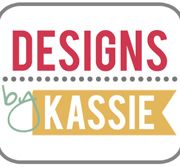For those who are not familiar, I started a series a while back called Turnover Tuesdays. Every Tuesday I like to highlight one item that I have resold. This will include profitable and non profitable sales. I hope that there is always something to learn.
The previous posts in the series can be found at the bottom of the post.
The previous posts in the series can be found at the bottom of the post.
The Product - ZTE SPRO2
On March 30th, I bought 5 ZTE SPRO2s on eBay for $349.99. They were going for about $450 at the time on Amazon. That would have been about $415 after fees, which is $60-$65 after shipping.
Soon after buying from eBay the familiar Amazon race to the bottom started. It wasn't too bad here, but prices bottomed out at about $380. While not amazing, that would still be breakeven and if I had to settle for something like that to avoid long terms storage fess I would but that was only a couple of weeks later.
In this case, it wasn't an extremely popular deal and it was limited to 5 per customer on eBay so the number of sellers never went insane but it definitely increased. You can see the Keepa chart below. The top is the price and the bottom is the number of sellers.
It isn't quite as stark as the following Keepa chart on a different product I'm selling which came from a daily deals site. I'll bet you can figure out what I think about those now. It hasn't recovered yet but you can already see from the chart that the recovery has begun, though you wouldn't know it from the prices. Keepa charts can be an amazing pricing tool for that reason.
'
Already by June prices started to recover a bit so it took about 2 months for recovery. I sold the first one for $499 which is actually even higher than the prices were before I purchased. I saw the number of sellers continue to decrease and I took a chance and it worked.
After I sold 2, I raised my price more. I went to $539.99 and 3 days later it sold again. That's incredible! I still had 2 more left and I actually raised my price again. Unfortunately prices didn't come with me, prices actually went down. Eventually I sold the last 2 for $536.95. I had one return that was in sellable condition and resold it again for $536.95.
The return cost me $5 total since it was resold for the same price I only lost the return fee. Had one of the earlier ones been returned I would have actually came out ahead since the price went up but I am not upset by this. There are actually no more FBA sellers so I could have sold all of them for more but you never know what will happen when you go too high.
You can see from Inventory Lab that I earned between $109 and $140 per sale which is 30-40% return on investment.
The reason I did so well and I was able to raise my price even though I hadn't sold yet is because I had my eye on the charts. Remember that prices lag behind the number of sellers. There is often a lot of sellers around the lowest price so even though the number of sellers decreases until that glut of sellers is gone you won't see an increase in price. If you are paying attention to the seller charts you can have a significant advantage over your competition.
Slightly More Complicated
Two other types of deals are completely different but for the same reason.
One is something that goes back on sale and the other is a replenishable deal.
If the ZTEs went back on sale, the chart would probably look something like this:
You see the first bump at the first sale and finally the price is coming back and numbers of sellers are decreasing and you see a second bump now. Notice that the second bump is even larger than the first one. This could be because the sale is better or what likely happened with this one (from personal experience) is that all the sellers from the first sale told their friends how well they did the first time and it's on sale again, everybody bought and their friends bought too.
When the item goes back on sale that can really hurt you if you were waiting for your big payday so that's a word of caution of being too patient.
Another possible chart is for a replenishable.
You will likely see a lot more ups and downs for replinishables. The item is always available but people don't buy more until the price goes higher again so there are lots of peaks and valleys. The number of sellers goes down now when the item goes on sale, rather when the price on Amazon peaks higher, then it drops again. It's a constant game of cat and mouse with other sellers trying to sell high before prices drop again since you know they will when other people notice it.
Bottom line: read your keepa charts, there is a wealth of information there and deals almost always follow the same curve. The trajectories vary greatly from product to product but that curve is there. You may never get back to that original price but your decision of when to sell can be much easier if you are a few steps ahead.













